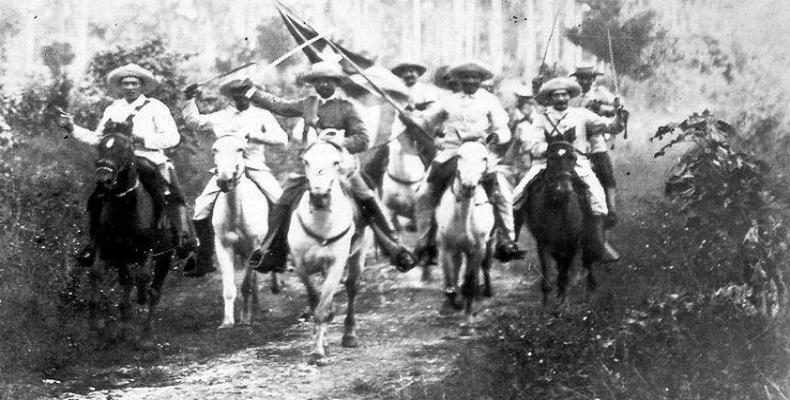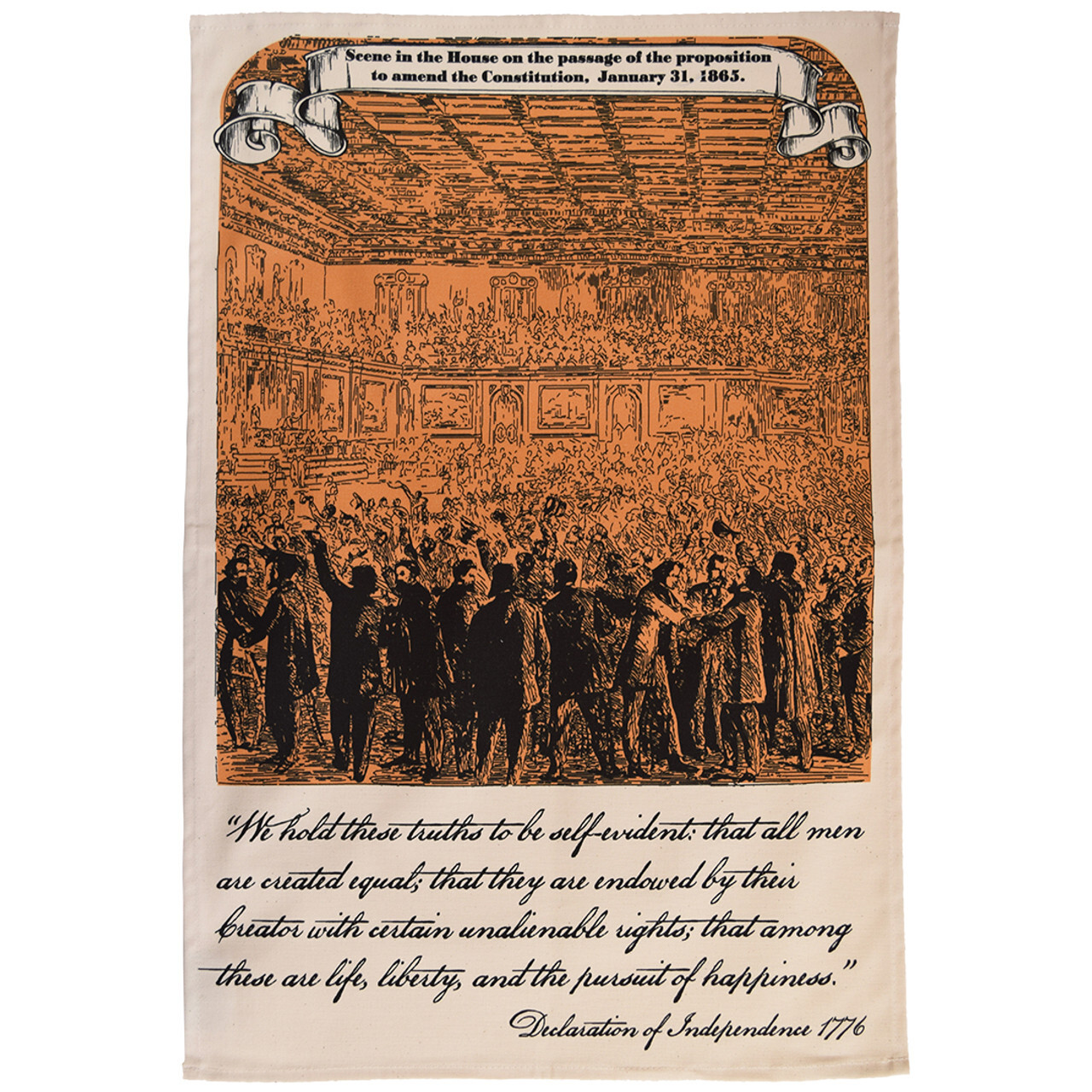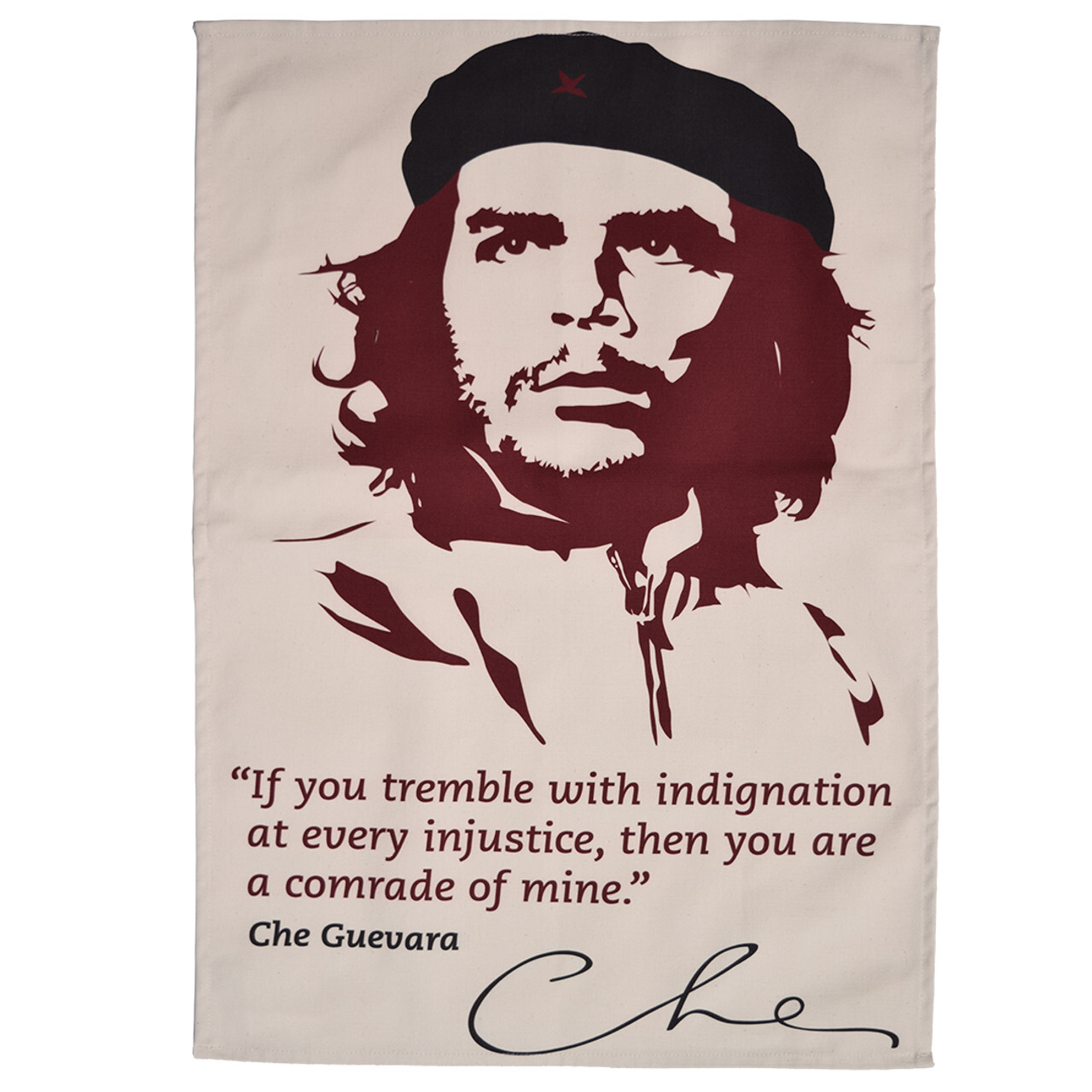Antonio Maceo: The Egalitarian Lieutenant
Posted by Pete on 12th Jun 2025
The Cuban tradition of anticolonialism came late, but strong

Lieutenant Maceo's cavalry charge during the Battle of Ceja del Negro
Cuba was exceptional during the 1890s.
At a time when imperialism and racism were widely accepted, Cubans fashioned a different form of politics that was both anticolonial and egalitarian.
The Afro-Cuban revolutionary, Antonio Maceo, embodied this moment of radical ambition in the Caribbean.
Maceo was born on this day in 1845, near the city of Santiago de Cuba. He grew up to lead the Cuban War of Independence against the Spanish Empire.
Like Toussaint L'Ouverture a century before him, Maceo sought to liberate a major Caribbean island from European imperial control
See the Toussaint L'Ouverture tea towel
The Spanish colony of Cuba “missed the bus” when most of Spain’s American empire broke free during the 1810s and 1820s.
This was because in Cuba the ‘creoles’ – American-born white people – were more concerned about Black revolution from below than Spanish rule from above.
Nineteenth-century Cuba, unlike most of Hispanic America, was a plantation economy based upon enslaved Black labour.
In this way, Cuba was closer to Haiti, Brazil, and the USA than Chile or Perú.
Creoles had been a leading force in the independence revolutions elsewhere in Hispanic America, but in Cuba they mostly refused to build the popular coalition with Afro-Cubans necessary to overthrow Spain.
Slavery had created violent racism among Cuban creoles, many of whom profited directly from the island’s slave economy.
Attempts at independence by Cuban creoles on their own were too weak. Spanish colonialism endured in Cuba because its opposition was divided.
But the situation changed dramatically in 1868.
While the US sought to throw off the shackles of slavery following its Civil War, Cuba was only just gearing up its application to join the independent states of the Americas
See the Reconstruction Amendments tea towel
A full-scale war of independence – the Ten Years’ War – was launched by Cuban radicals.
Antonio Maceo and his dad and brothers, encouraged by his mum, Mariana, immediately joined up to fight for independence from Spain.
The Maceo y Grajales clan were free people of colour, working a small farm outside Santiago de Cuba. They were mobilised by the Cuban rebels’ egalitarian vision of decolonisation.
The creole leadership of the independence movement, behind Carlos Manuel de Céspedes (1819-74), demanded the abolition of slavery in Cuba.
It was now accepted that a popular, multiracial coalition was needed to defeat Spain.
Antonio Maceo turned out to be a talented soldier. His dad, Marcos, had actually served in the Spanish royalist army against Simón Bolívar in Venezuela, and his mum instilled Antonio with soldierly discipline from childhood.

Antonio Maceo, second in command of the Cuban army of independence
Despite the lingering racism of his superior officers, Maceo was rapidly promoted during the Ten Years’ War thanks to his battlefield intelligence and courage, always leading from the front.
With comrades like the Dominican-born Máximo Gómez, Maceo pioneered guerrilla warfare strategy against the Spanish in Cuba.
He was hailed as el Titán de Bronce – ‘The Bronze Titan’ – for being the most prominent Afro-Cuban of the revolution.
But by 1878 the Cuban rebels were running out of steam, undermined by regional differences and the continued racism of many creoles.
A ceasefire was signed with the Spanish, the Pact of Zanjón, in return for an amnesty.
But Antonio Maceo, by now a General in the rebel army, led a group of radicals to refuse the Pact because it neither secured independence nor the abolition of slavery.
For the next two decades, Maceo and other Cuban radicals like the anticolonial thinker José Martí lived in exile.
Che Guevara - probably the best known Latin American revolutionary - was preceded by many other figureheads from Bolívar to Martí and Maceo
Maceo travelled the Caribbean and wider Americas, maintaining the Cuban revolutionary network with an eye to trying for independence again.
He made contacts among Haitian radicals, and dreamt of a wider Caribbean federation of Cuba, Haiti, and the Dominican Republic based on racial equality and anticolonialism.
Then, in the mid-1890s, Martí got in touch from New York to argue that the time was right to reboot the revolution in Cuba.
Maceo agreed to serve as second-in-command to Máximo Gómez, and the revolutionaries landed in Baracoa in eastern Cuba in early 1895.
Martí was killed in action soon afterward, but Maceo helped to lead a rapid advance across the island.
On 7 December 1896, Maceo was killed fighting on the frontline in Havana province.
After his death, in 1898, the United States intervened in the war under the guise of helping the Cubans win independence.
It was a cruel joke because the intervention was actually used to turn Cuba into a de facto colony of the U.S.
Maceo, like Martí, had been warning against the U.S. threat for decades and now it came true.
But the U.S. empire didn’t get everything its own way.
Racist American commanders wanted to export the Jim Crow system to Cuba after the Spanish were defeated, but the multiracial solidarity built up over half a century of political organising was too strong, so they had to back down.
This was Maceo’s legacy, along with a tradition of anticolonialism that meant Cubans would never accept domination by foreign empires.



